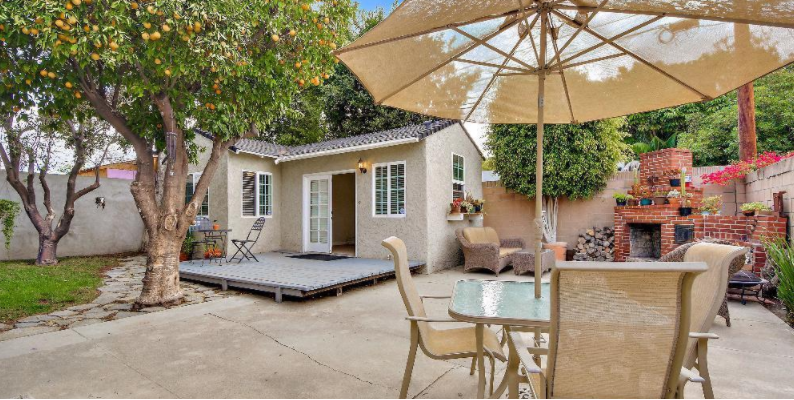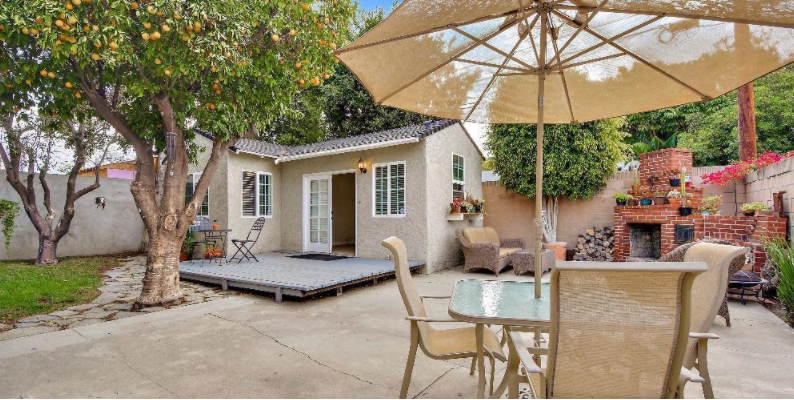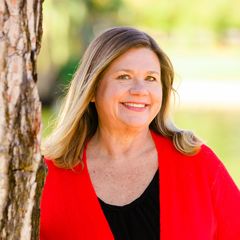Homes with additional living spaces separate from the main house are growing in popularity. Whether it’s a “casita,” “granny unit,” or “mother-in-law suite,” these accessory units offer flexibility and value. They’re a smart option for those who want to live in one space and rent out the other to help offset their mortgage. They also work well for multi-generational living, providing privacy while keeping loved ones close. As housing needs continue to evolve, more buyers are seeking properties with accessory dwelling units—or considering adding one to their existing home—as a way to increase both functionality and long-term value.
Here is a breakdown of some of the most popular kinds of accessory units.
Casita: The Little Bungalow House
The name casita comes from the Spanish word “small house.” It’s typically a studio-sized space that’s separate from the main house and has its own entrance. The location of the unit is occasionally in parallel with the garage or free-standing in the backyard of the property. They typically include a bathroom and sometimes have a kitchenette. The main, open space can be used as a bedroom or a home office.
Casitas are often used as a rental space. They are especially popular across the Southwestern United States. In fact, some new housing developments in this region are building are including them. These casitas add extra value to the main home because of all the options it offers. Homeowners can rent the space out to renters, family members, or even use it as an Air BnB. “Casita” can sometimes be used interchangeably with a mother-in-law suite.

This accessory dwelling unit is completely separate from the main house.
Mother-in-Law Suite
Unlike a casita, the mother-in-law suite can be built within the original footprint of the house. It usually includes a bedroom space, bathroom, and kitchenette. This type of space typically has direct access to the main house but may have a separate outside entrance from the main house. Occasionally, a separate unit from the house will also be referred to as a mother-in-law suite. The term that gets used depends on the area of the country that you live in. The term “mother-in-law suites” is especially popular in reference to European properties. If you’re looking for a house with the extra living space attached, this is generally the more reliable term. Another commonly used term for these suites is “granny flats.”
Accessory Dwelling Unit / Tiny House
Additionally, there are properties on which there is an entirely separate second house on the lot. Second houses usually have all the features of the main house and are often used as income properties. Two-unit properties are more common in some neighborhoods than others, partly because of zoning. In Long Beach, the Rose Park and Belmont Heights neighborhood offer some properties with a bungalow in the front and a smaller house in the rear.
The most recent craze has been the tiny house. In order to be an accessory dwelling unit, a tiny house must have a laid foundation. A tiny house is defined by the multi-functional surfaces within. A bed can easily be hidden in a wall or a loft space. Oftentimes the common area will be combined with a kitchenette or living space. Bathrooms remain separate but are generally much smaller than in other homes.
New Legislature to Add Your Own Accessory Dwelling Unit
Zoning is often a challenge when adding a second dwelling space. The construction of a separate dwelling area has been prohibited in many areas zoned for single-family residences. But back in September 2016, SB-1069 passed and the law took effect on January 1, 2020. It provides some flexibility when building accessory units on a California property. The flexibility varies from city to city, but the law’s intention is to make it easier for homeowners to add on extra accessory dwelling units (ADUs). This creates opportunities for rental spaces and will combat the increasing need for housing in Southern California.
For rules specifically pertaining to accessory dwelling units in Long Beach, please check out the City’s website here. There is information on ADU zoning, as well as ADU garage conversions.
The necessary permits still need to be submitted to the city for ADU construction. Features like the kitchenette and bathroom are strictly regulated, and there are also rules concerning the unit’s permanence on the lot.
Buying an ADU
Thinking of seeking one of these rare properties out, or selling your own? The Shannon Jones Team has sold multiple properties with an accessory dwelling unit in the Southern California area. We’re experienced with the ins and outs of obtaining and marketing these gems. Fill out the contact form below for more information from our team.



Hello!
My elderly dad and I relocated to Phoenix from Oceanside in 2014. We are selling this metro Phx 4 Bd, 2 ba ranch style house 2100 sq ft w large diving pool shed gazebo 2 car garage, mid century and kitchen updated w granite and all new ss appliances. I’m seeking home w casita in desirable landscaped property, suitable for Airbnb for income. I need 2 bedrm 2 ba w wood beamed high ceilings, big windows to decks w views or just unique or tranquil courtyards and back house w studio/ workshop separate! Want to move back to CA if I find right property at right price w many options for my future. I’m from Covina,Ca and lived in Oside 20 years. I love modern A frame cabins and mid century arch as well as industrial or farmhouse mix! Water features/courtyard a plus! Can you place my request on your email notification list?